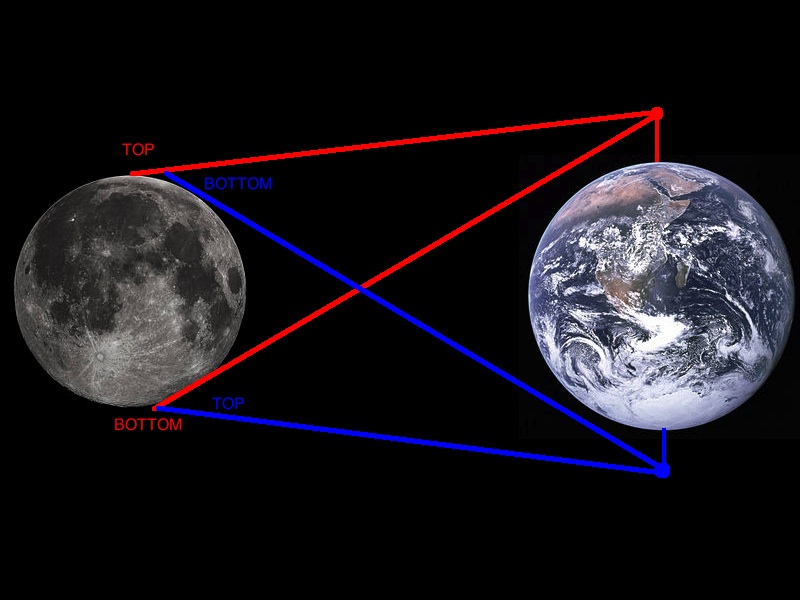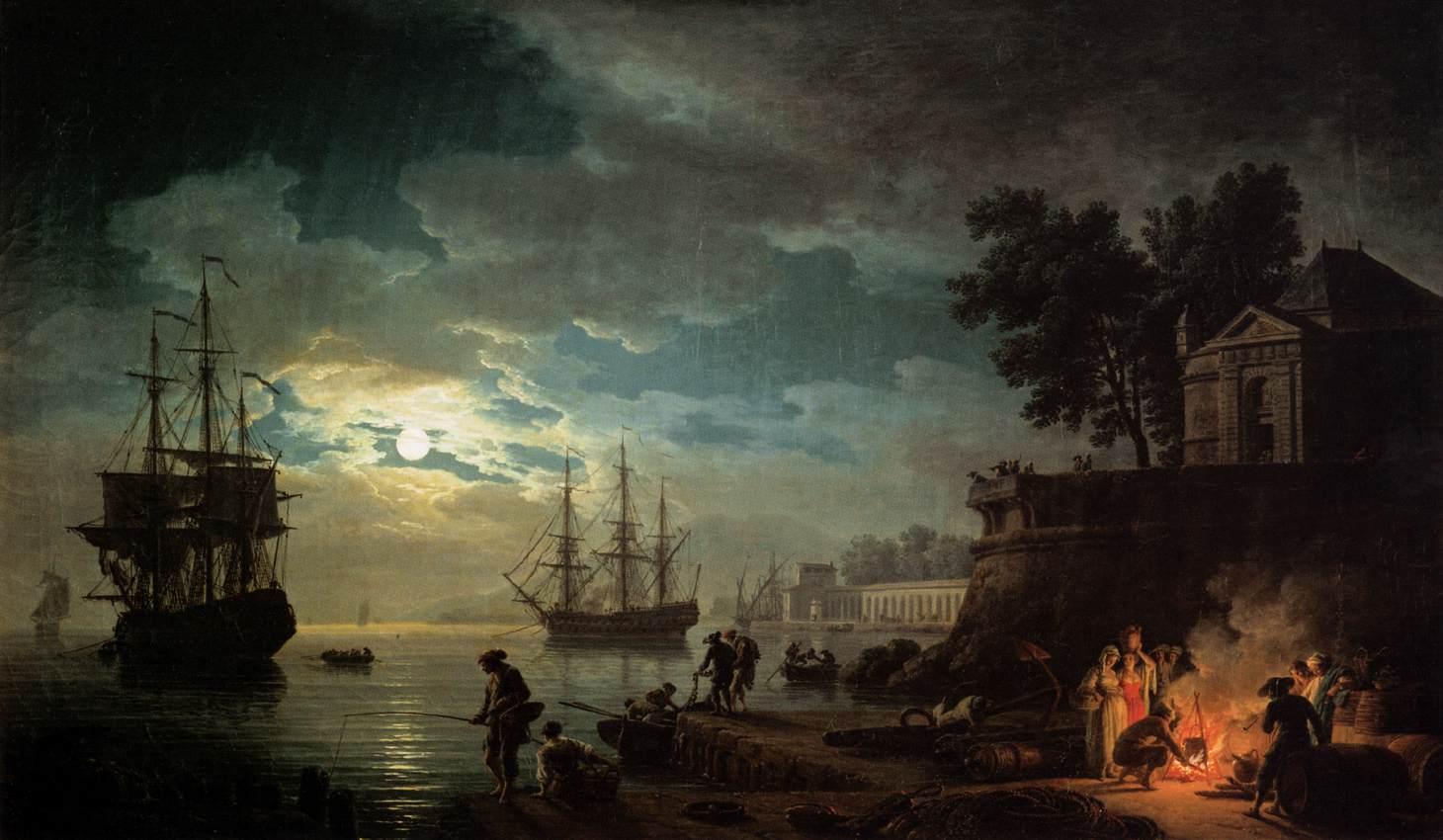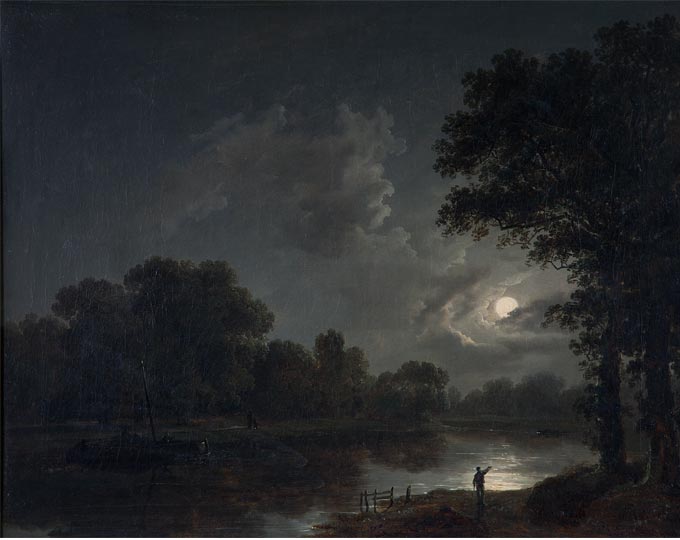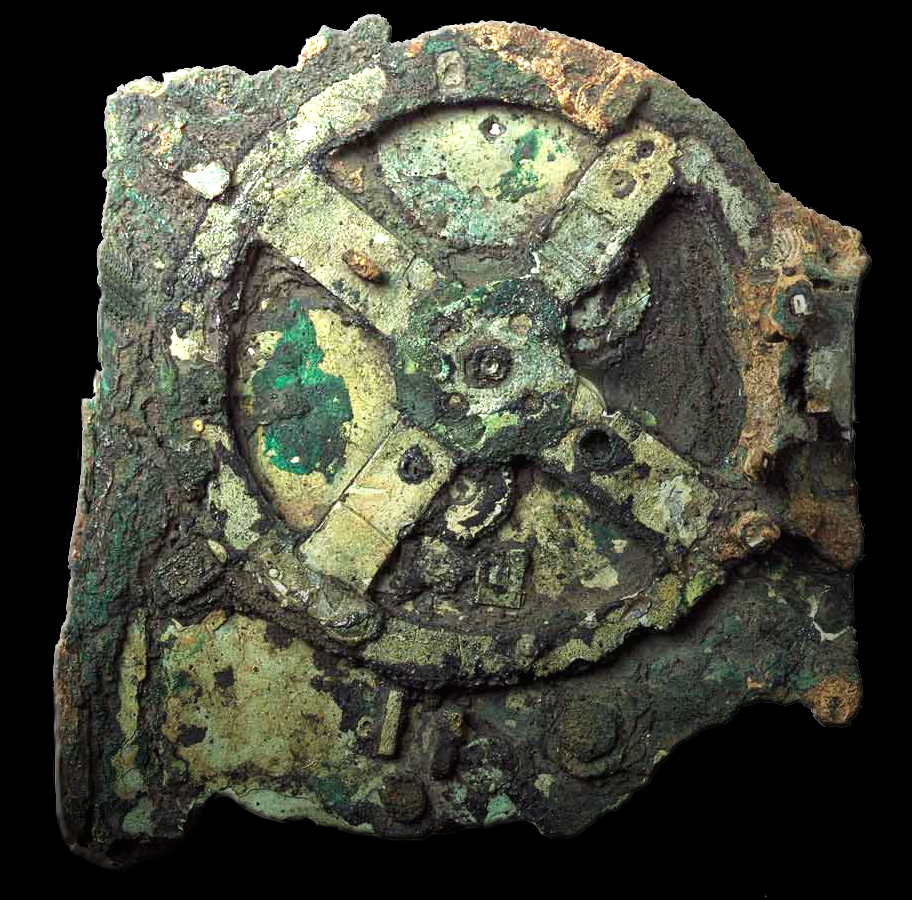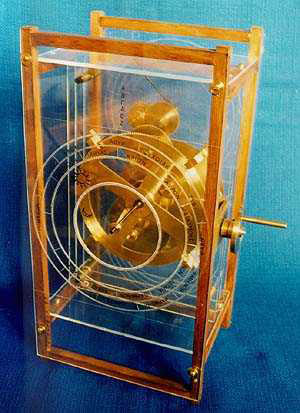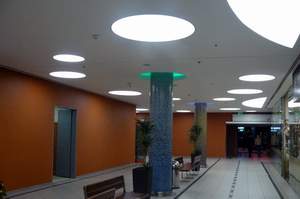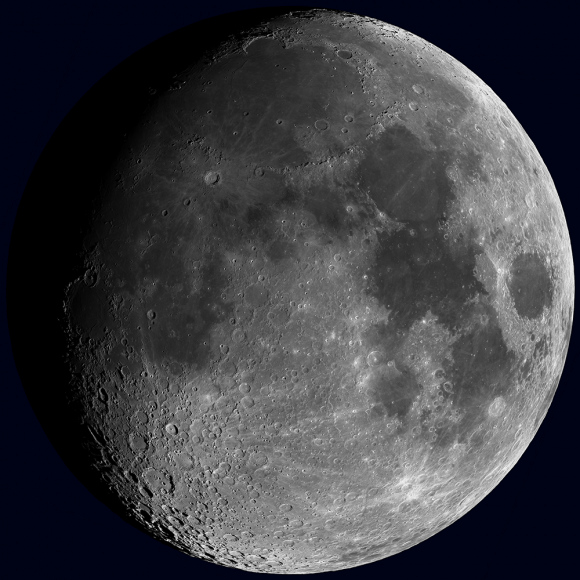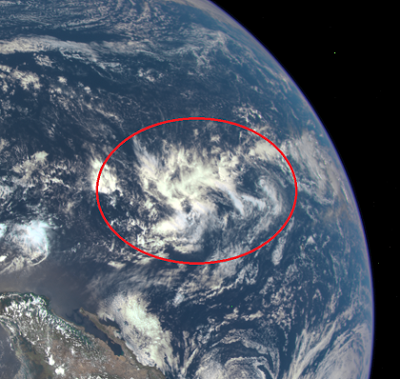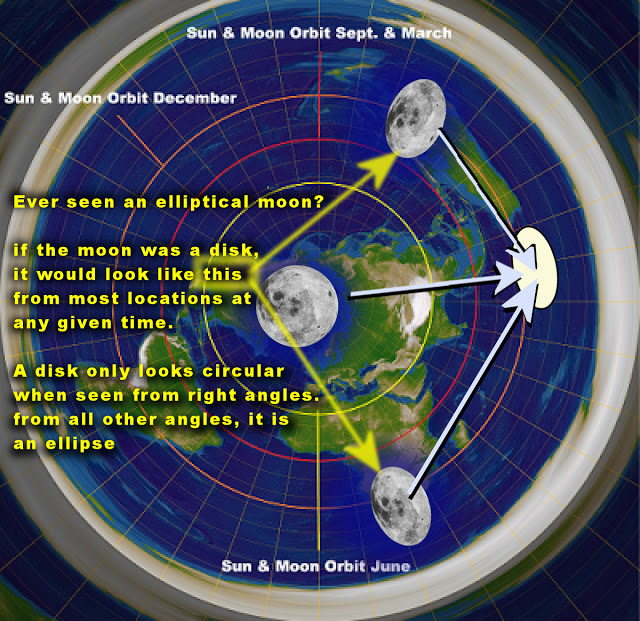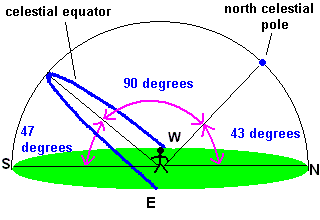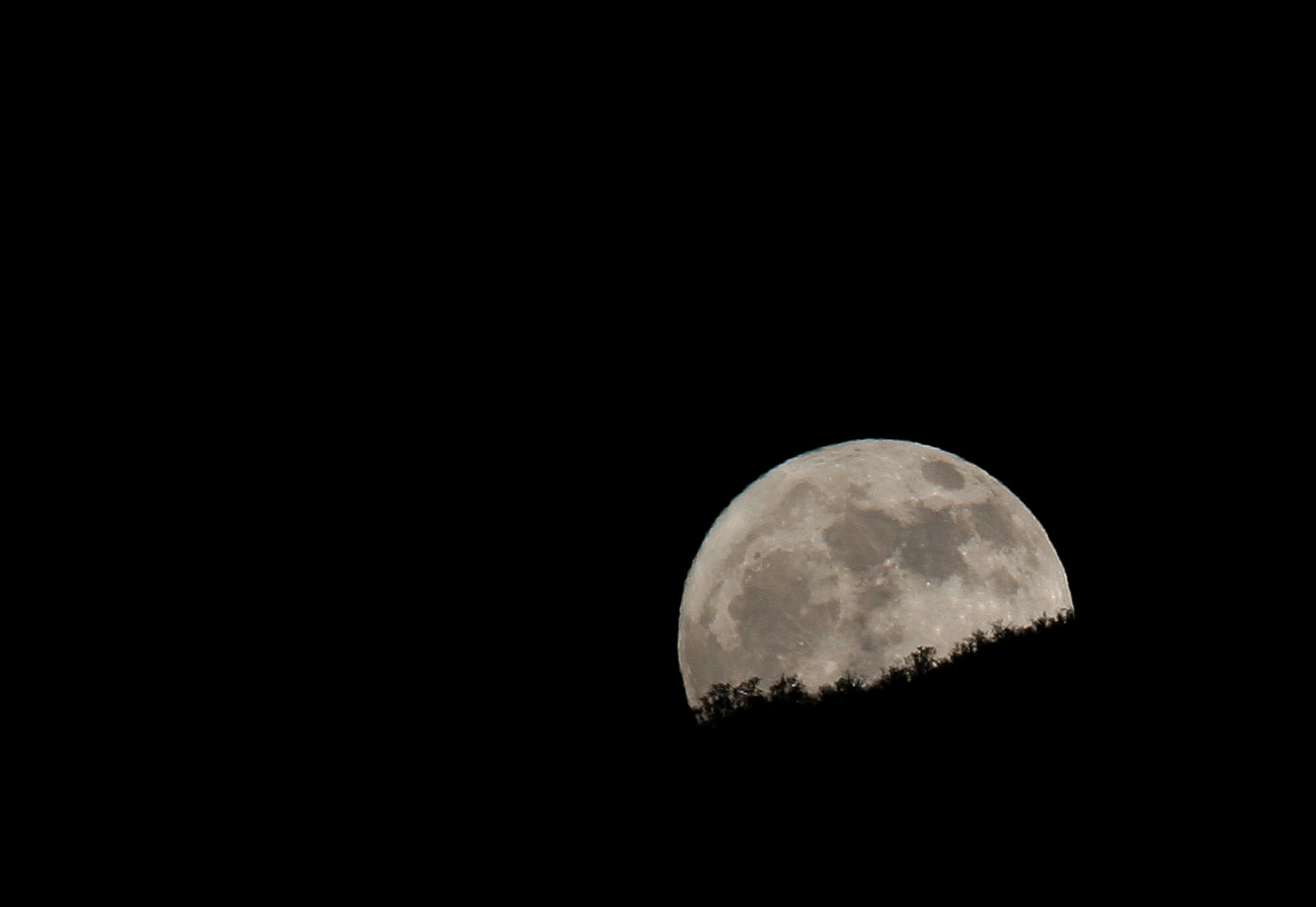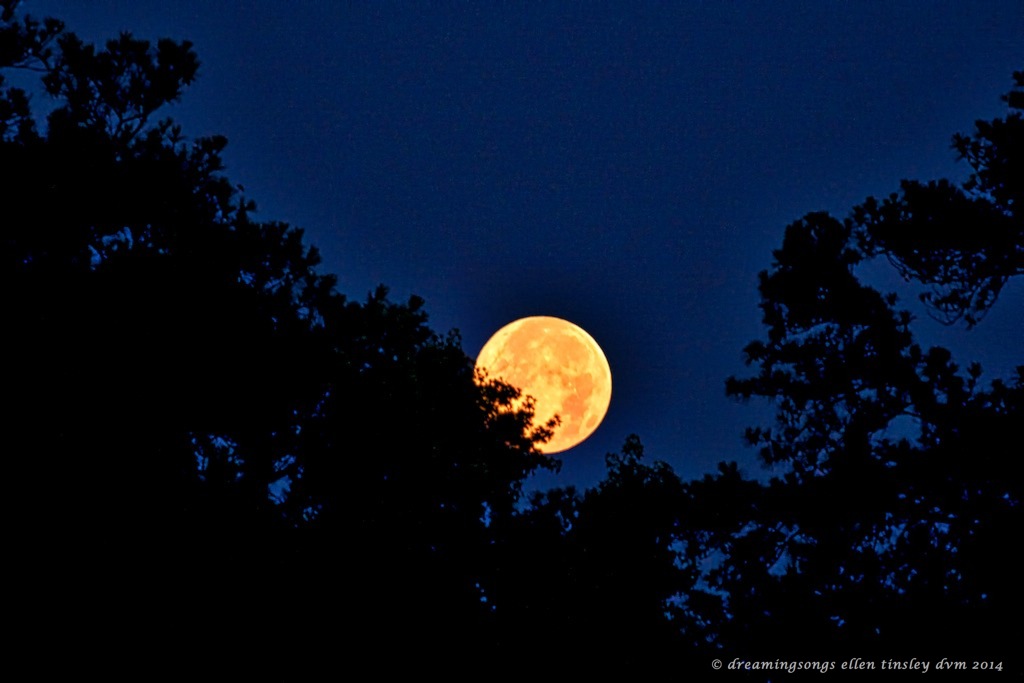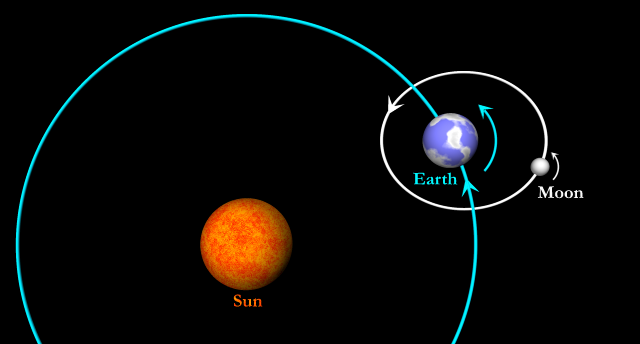Sure:


This commonly-cited explanation is flawed and incomplete, primarily because it depends on arbitrary orientation of the views involved. To demonstrate, let us imagine three observers standing on the earth, at around the equinox, and at the same longitude, but different latitudes:
- One at 45°N.
- One at the equator.
- One at 45°S.
Each will be given a camera, which will be set level with his/her horizon, pointing due east, and will photograph the rising full moon just as it clears the horizon. When we compare the three photos, we will find that as compared with that of the observer at the equator, the moon's disc in the northern observer's photo will appear to have been rotated 45° clockwise with respect to the horizon, and vice versa in that of the southern observer.
Using the globe model, it is easy to visualize why this is by imagining a single video camera affixed to a train car that travels between the northern and southern observers; were this train to travel around 3000 miles per second, here is roughly what the film would show:

Unlike the globe model, the flat model can provide no coherent explanation for this apparent rotation, which can be confirmed by anyone, anywhere, with no special training or equipment.
Also worth mentioning is that a single observer can confirm this independently, from one single position, since over the course of the night, his longitude will travel through 180°. Were the earth instead to stand still, we could use a similar train to more easily visualize the movement of his camera; in this case, it travels from his evening position at 45°N, up over the north pole, to his morning position at 45°N on the opposite longitude. Just as with the previous example, he will observe an apparent 90° rotation of the moon over this time, albeit clockwise, as opposed to what is shown above for the south-bound train.
Furthermore, note that these observations clarify not only the apparent rotation of the moon, but also lay bare in precisely which way the "
two people looking at a figure on the ceiling" explanation misleads: by neglecting the fact that frame of reference matters.
Provided that we take the hook, we may not notice the fact that when looking at the ceiling, we are free to rotate our view to produce any result we like; if we wish the two views to be mutually inverted, as suggested by Benji, we need only make sure to set the up vector of each camera opposite that of the other. And if we wish them to match, we need only align the camera up vectors; it is a perfect confirmation bias trap.
However, we are no longer free to make this mistake, once the horizon enters the picture; instead, since we then see that the rotation is occurring with respect to the horizon itself, and that it would be futile to attempt to get round it by rotating the camera, it becomes inescapable that either:
- Each observer sees a custom-rotated version of the moon, or
- Each observer's horizon is rotated with respect to the moon.
Whereas the latter is simply self-evident in the globe model, the former cannot be explained, irrespective of the model, by anything but the purest solipsism.
